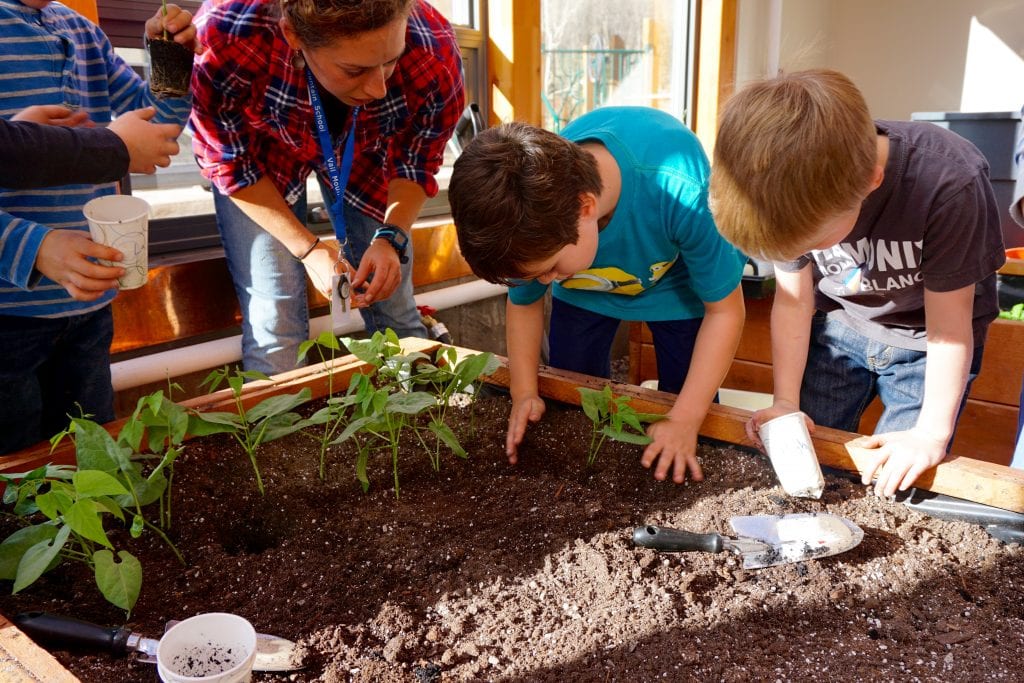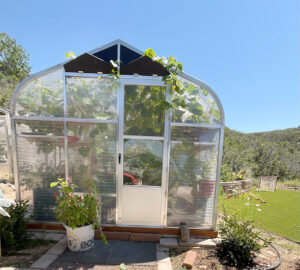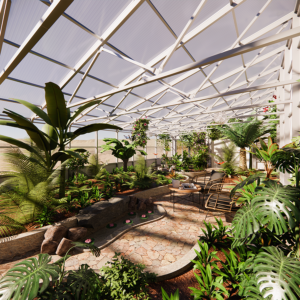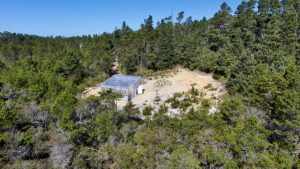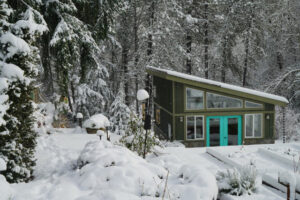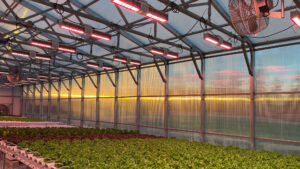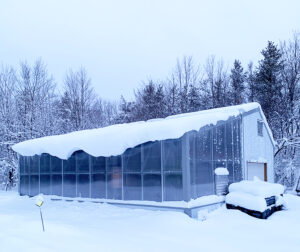Greenhouses for schools create hands-on classrooms where math and science projects can unfold. They teach students how to grow food while simultaneously providing a healthy source of nutritious vegetables for school meals. They can also become an integral part of the community. At The Pomfret School aquaponic greenhouse, for example, students grow food both for the dining hall and a local food bank. Finally, a solar greenhouse can demonstrate a schools’ commitment to sustainability, setting it apart as a forward-thinking institution.
Planning a year-round school greenhouse, however, comes with challenges. Administrators must fund the project, coalesce numerous stakeholders and secure a building permit. While the benefits justify this effort, it’s important to realize that planning and building a greenhouse for a school requires several stages. Here are our top tips for creating a year-round school greenhouse.
1. Identify Decision Makers
Usually, a school greenhouse is spearheaded by one or two passionate people, either teachers, administrators or parents. This person usually becomes the project driver, raising interest and presenting on the many benefits of a school greenhouse. Afterward, the project often expands to involve a litany of stakeholders, including other parents, students, building departments and/or school boards.
Like any building project, a greenhouse for a school involves many decisions and requires a core group committed to the process. A good strategy is to secure a representative from each group – someone who wants to be more involved and can add their unique perspective to the process. According to Bill Martin, one of the initiators of the Pomfret School greenhouse in Connecticut, “the key to success is having one or two people dedicated to driving and steering the project and creating an expansive network of partners at the school, both adults and students, to help execute the project using their particular talents.” For the Pomfret School greenhouse, instructors created a course to allow students to design and site the greenhouse. While students and teachers were planning the school greenhouse design, administrators began fundraising. The efforts complemented each other, expediting the project.
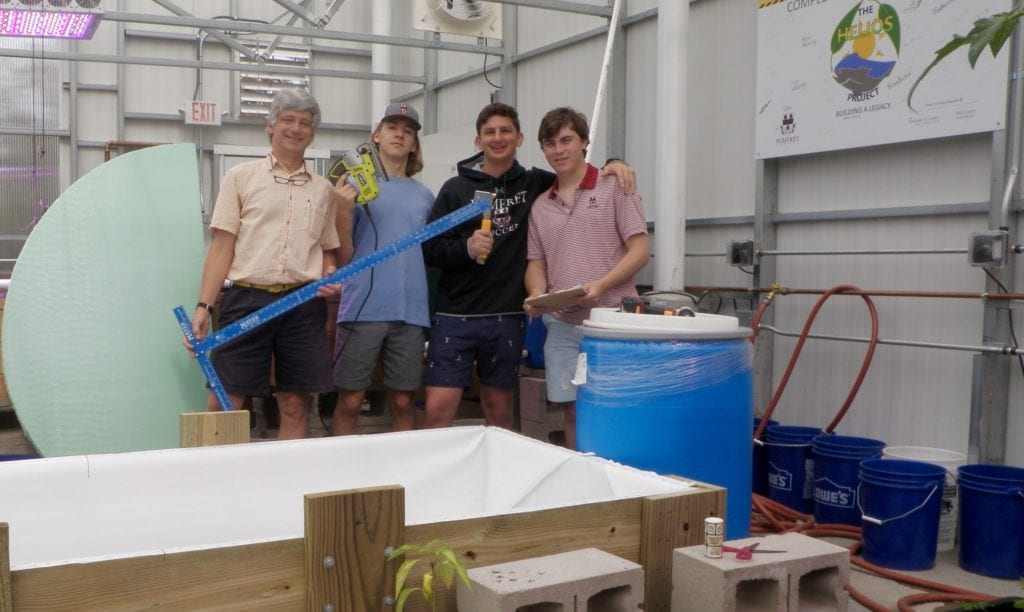
2. Clarify Goals
For most schools, a greenhouse serves multiple purposes. It can be a classroom, source of produce, meeting area, lab space, and home for extracurricular activities. Understanding how different groups will use the school greenhouse — and its many different roles in school life — will help clarify the size and layout of the structure. Once you have identified decision-makers, it is important to ask them how they could use or benefit from a year-round greenhouse. With these goals in mind, you can start sketching out a floor plan of how the space will be used.
In the process of creating the custom greenhouse at Vail Mountain School greenhouse, for example, Ceres greenhouse design team considered how each classroom could use the greenhouse. Younger classes will learn the basics of photosynthesis in garden beds. Eighth-graders will study the effects of light on seedlings in the small lab area, and fifth graders monitor pH levels of the greenhouse aquaponic system. The space is multi-functional and diverse, allowing for many uses between teachers and classrooms – a design choice that was considered since the beginning.
3. Create a Budget
Funding a school greenhouse is obviously a prime factor in the planning process, and usually a school’s greatest hurdle. Creating a preliminary budget for the project is helpful to set a funding goal. Many greenhouse designers can provide a ballpark figure of costs. Keep in mind that this should be a rough estimate, and you probably want to plan a cushion for unforeseen costs. You also want to take into account operational costs when choosing a greenhouse structure. Standard greenhouses are energy intensive to operate year-round and in the end much more expensive than an energy-efficient year-round greenhouse. What you should also consider is the value and usability of your school greenhouse against the cost. A Ceres energy-efficient greenhouse can be used year-round whereas a hoophouse or another inefficient greenhouse makes for a poor Winter classroom. Contact Ceres if you have questions about setting a goal for your school greenhouse budget.
Most greenhouses for schools are financed with a mix of funds, either the school’s own funds, private donations from the community, or grants. Many grants for outdoor learning gardens apply to a school greenhouses – particularly if you show the added benefits of a year-round learning garden. We also recommend targeting foundations or funding sources that share the vision of your school greenhouse – whether community building, hands-on learning, or fostering environmental ethics. For more information on financial resources for a school greenhouse, visit our page about financing your Greenhouse.

4. Make a Timeline
After securing funding, or even before, we recommend making a timeline for the project. Working backwards from your ideal completion date is often a good strategy. An important thing to consider is that greenhouse construction is usually easiest during the summer recess, but you will need to secure building permits and funding in advance. It’s important to be realistic about timelines, and insert key deadlines like ‘submit building permit.’ As an example, here is the timeline we came up with for the Community School greenhouse, after they had completed fundraising for their project:
- Summer Year 1: Identify project goals and scope
- Fall Year 1: Develop preliminary greenhouse design, partnering with Ceres to design a custom school greenhouse
- Winter Year 1: Finalize greenhouse design, select a local contractor and finalize the budget. During this time, the Ceres team could also create an engineered greenhouse plan for permit approval
- Spring Year 2: Submit permit for approval, prepare the site and make construction timeline
- Summer Year 2: Construct a greenhouse
- Fall Year 2: Greenhouse opens, students finish installing aquaponic greenhouse systems and planting beds inside
5. Consider Management
After the greenhouse is built, who will manage it? Like any garden, a school greenhouse comes with certain tasks: watering, seeding, harvesting, monitoring for pests, etc. It’s important to clarify how these tasks will be managed. Many schools hire a separate greenhouse manager to oversee the greenhouse and direct some gardening specific classes or extracurricular activities. In the case of the Vail Mountain School greenhouse, the school created a new position for this role. In other cases, greenhouse management is shared among a group of volunteers or instructors.
6. Plan Operational Costs
As noted above, a greenhouse can have some costs. Designing an energy-efficient greenhouse that utilizes passive solar design greatly minimizes operating costs. A passive solar greenhouse maximizes the use of natural sunlight for year-round heating. They are also designed to minimize the need for cooling, so fossil fuel use is kept to a minimum. The design of the greenhouse itself can be a teaching point if sustainable engineering is in the curriculum. We recommend talking to a greenhouse design professional to help forecast energy costs for a school greenhouse, no matter what the style or design.
In our experience, the largest operational cost is additional labor that it takes to manage the greenhouse. Again, it may be advantageous to create a new part-time or full-time position for directing classes or extracurricular activities in the greenhouse. Plan this into annual budgets so that it does not come as a surprise down the road.
Interested in starting your own custom school greenhouse? Contact us.

